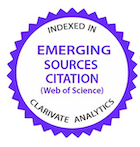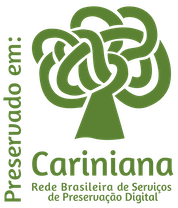Caracterização qualitativa e quantitativa dos dejetos de poedeiras comerciais alimentadas com dietas contendo minerais e óleo de alecrim
DOI:
https://doi.org/10.1590/1809-6891v25e-77674EResumo
Realizou-se este estudo com o objetivo de avaliar fontes de minerais e de níveis do óleo de alecrim na dieta de poedeiras comerciais sobre as características qualitativas e quantitativas dos dejetos gerados. Os dejetos foram provenientes de 288 poedeiras comerciais da linhagem HyLine Brown (poedeiras semipesadas) com 30 semanas de idade, durante o período de 112 dias (4 ciclos de 28 dias). Foi utilizado delineamento inteiramente casualizado com esquema fatorial 2x3 com medidas repetidas no tempo (16 repetições), sendo duas fontes minerais (inorgânica e orgânica) e três níveis de óleo de alecrim (0, 100 e 200 mg kg-1). Semanalmente os dejetos foram coletados, pesados e realizados os cálculos de produção de dejetos, coeficiente de resíduo (Cr) e as análises de sólidos totais (ST), sólidos voláteis (SV), pH, macro e microminerais. As fontes de minerais afetaram as características qualitativas dos dejetos. Os níveis de óleo de alecrim afetaram as características quantitativas e qualitativas do dejeto gerado. Concluiu-se que dietas contendo mineral orgânico resultam em dejetos com menor poder poluente por apresentar menores valores de ST, pH, N total e P total. O óleo de alecrim aumenta a produção de dejetos na MN e aumenta os valores de ST e SV nos dejetos das poedeiras causando maior impacto ambiental.
Downloads
Referências
Bhagwat, VG, Balamurugan E, Rangesh P.Cocktail of chelated minerals and phytogenic feed additives in the poultry industry: A review. Veterinary World. 2021; 14(2): 364. https://doi.org/10.14202/vetworld.2021.364-371
Zafar MH, Fatima M. Efficiency comparison of organic and inorganic minerals in poultry nutrition: a review. PSM Veterinary Research. 2018; 3(2): 53-59. https://psmjournals.org/index.php/vetres/article/view/264
Orzuna-Orzuna JF, Lara-Bueno A. Essential oils as a dietary additive for laying hens: performance, egg quality, antioxidant status, and intestinal morphology: a meta-analysis. Agriculture. 2023; 13(7): 1294. https://doi.org/10.3390/agriculture13071294
Petricevic V, Lukic M, Skrbic Z, Rakonjac S, Doskovic,V, Petricevic M, Stanojkovic A. The effect of using rosemary (Rosmarinus officinalis) in broiler nutrition on production parameters, slaughter characteristics, and gut microbiological population. Turkish Journal of Veterinary & Animal Sciences. 2018; 42(6): 658-664. https://doi.org/10.3906/vet-1803-53
Kebreab E, Liedke A, Caro D, Deimling S, Binder M, Finkbeiner M. Environmental impact of using specialty feed ingredients in swine and poultry production: A lifecycleassessment. Journal of Animal Science. 2016; 94 (6): 2664-2681. https://doi.org/10.2527/jas.2015-9036
Ashworth AJ, Chastain JP, Moore PA. Nutrient characteristics of poultry manure and litter. Animal manure: Production, characteristics, environmental concerns, and management. 2020; 67(1): 63-87. https://doi.org/10.2134/asaspecpub67.c5
Rostagno HS, Albino LFT, Donzelle J, Gomes PC, Oliveira RF, Lopes DC, Ferreira, AS, Barreto SLT, Euclides RF. Tabelas brasileiras para aves e suínos: composição de alimentos e exigências nutricionais. 3ª Ed. Viçosa: UFV; 2011. 252p.
Apha - American Public Health Association. Standard methods for the examination of water and wastewater. 24th ed. Washington DC: APHA, AWWA, WEF, 2023, 1624p.
Bataglia OG, Furlani AMC, Teixeira JPF, Gallo JR. Métodos de análise química de plantas. 78 ed. Campinas: Instituto Agronômico; 1983. 48p. Portuguese.
Silva DJ, Queiroz AC. Análise de Alimentos: métodos químicos e biológicos.3ª Ed. Viçosa: Imprensa Universitária da UFV; 2002. 235p.
Malavolta E, Vitti GC, Oliveira SA. Micronutrientes, uma visão geral. In: Ferreira ME, Cruz MC. Micronutrientes na agricultura. Piracicaba: POTAFOS/CNPq, 1991. p.1-33.
Garcia ERM, Cruz FK, Santos TMB, Barbosa Filho JA, Gomes FOC, Xavier CAN. Characterisation and quantification of laying waste of fed with different corn particle size. Archivos de zootecnia. 2016; 65(250): 191-195. https://www.redalyc.org/articulo.oa?id=49545852012
Augusto, KVZ; Kunz, A. Tratamento de dejetos de aves poedeiras comerciais. In: Palhares JC, Kunz, A, editors. Manejo ambiental na avicultura. Concórdia: Embrapa suínos e aves. 2011, 153-174p.
Orrico Junior MAP, Orrico ACA, Lucas Junior J. Produção animal e o meio ambiente: uma comparação entre potencial de emissão de metano dos dejetos e a quantidade de alimento produzido. Engenharia Agrícola. 2011; 31(2): 399-410. https://doi.org/10.1590/S0100-69162011000200020
Ortiz FCG, Cappi N, Santos TMB, Silva PP. Teores de fósforo, nitrogênio e sólidos em dejetos de poedeiras alimentadas com milho com diferentes granulometrias. 5º Simpósio Sobre Recursos Naturais e Socioeconômicos do Pantanal, Corumbá- MS, 2010.
Zahan Z, Othman MZ. Effect of pre-treatment on sequential anaerobic co-digestion of chicken litter with agricultural and food wastes under semi-solid conditions and comparison with wet anaerobic digestion. Bioresource technology. 2019; 281(1): 286-295. https://doi.org/10.1016/j.biortech.2019.01.129
Afonso ARE, Foltin JP. A substituição da análise de demanda química de oxigênio (DQO) pela de carbono orgânico total (TOC) e elaboração de um fator (K) para conversão dos resultados das técnicas em efluentes industriais. Revista Brasileira de Processos Químicos. 2023; 4(1): 26-50. https://www.fateccampinas.com.br/rbpq/index.php/rbpq/article/view/32
Sanches DS, Garcia ERM, Santana PG, Andrade GC, Salmazzo GR. Aditivos no tratamento de dejetos de poedeiras comerciais. Research, Society and Development. 2021; 10(1): e19410111229-e19410111229. https://doi.org/10.33448/rsd-v10i1.11229
Kiehl EJ. Manual de compostagem maturação e qualidade do composto. Piracicaba: Editora Degaspari, 1998, 171p.
Toppel K, Kaufmann F, Schön H, Gauly M, Andersson R. Effect of pH lowering litter amendment on animal-based welfare indicators and litter quality in a European commercial broiler husbandry. Poultry Science. 2019; 98(3): 1181-1189. https://doi.org/10.3382/ps/pey489
Sousa FC, Tinôco IFF, Paula MO, Silva AL, Souza CF, Batista FJF, Barbari M. Medidas para minimizar a emissão de amônia na produção de frangos de corte: revisão. Revista Brasileira de Engenharia de Biossistemas. 2016, 10(1): 51-61. https://doi.org/10.18011/bioeng2016v10n1p51-61
Wang G, Liu LJ, Tao WJ, Xiao ZP, Pei X, Liu BJ, Ao TY. Effects of replacing inorganic trace minerals with organic trace minerals on the production performance, blood profiles, and antioxidant status of broiler breeders. Poultry science. 2019; 98(7): 2888-2895. https://doi.org/10.3382/ps/pez035
Qiu J, Lu X, Ma L, Hou C, He J, Liu B, Xu J. Low-dose of organic trace minerals reduced fecal mineral excretion without compromising performance of laying hens. Asian-Australasian Journal of Animal Sciences. 2020; 33(4): 588. https://doi.org/10.5713/ajas.19.0270
Downloads
Publicado
Como Citar
Edição
Seção
Licença
Copyright (c) 2024 Ciência Animal Brasileira / Brazilian Animal Science

Este trabalho está licenciado sob uma licença Creative Commons Attribution 4.0 International License.
Autores que publicam nesta revista concordam com os seguintes termos:
- Autores mantém os direitos autorais e concedem à revista o direito de primeira publicação, com o trabalho simultaneamente licenciado sob a Licença Creative Commons Attribution que permite o compartilhamento do trabalho com reconhecimento da autoria e publicação inicial nesta revista.
- Autores têm autorização para assumir contratos adicionais separadamente, para distribuição não-exclusiva da versão do trabalho publicada nesta revista (ex.: publicar em repositório institucional ou como capítulo de livro), com reconhecimento de autoria e publicação inicial nesta revista.
- Autores têm permissão e são estimulados a publicar e distribuir seu trabalho online (ex.: em repositórios institucionais ou na sua página pessoal) a qualquer ponto antes ou durante o processo editorial, já que isso pode gerar alterações produtivas, bem como aumentar o impacto e a citação do trabalho publicado (Veja O Efeito do Acesso Livre).






























